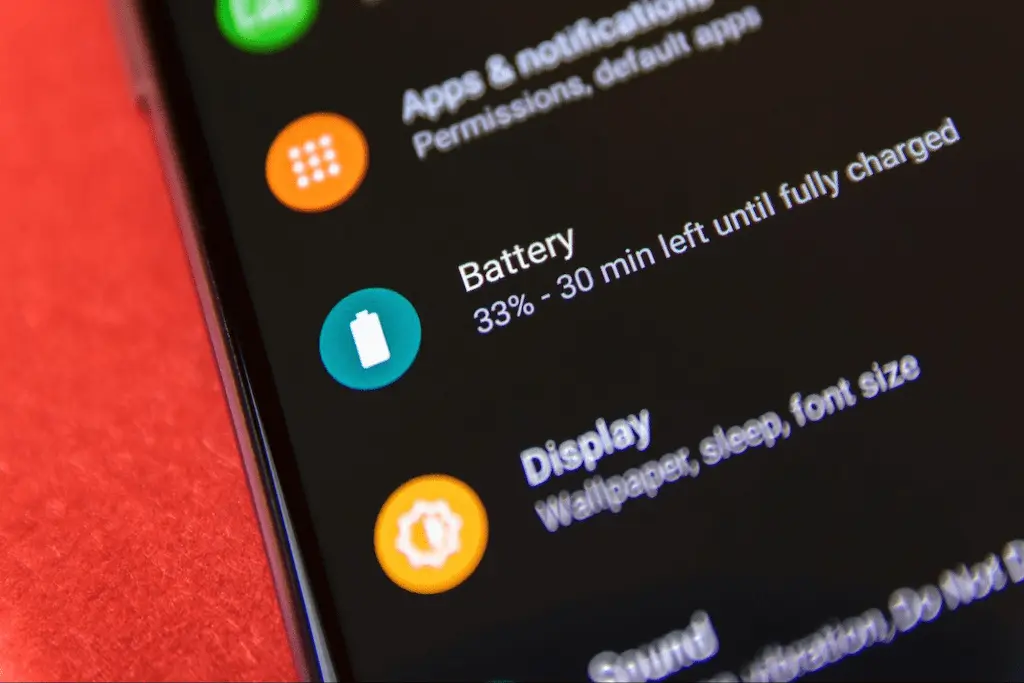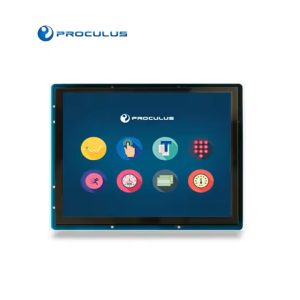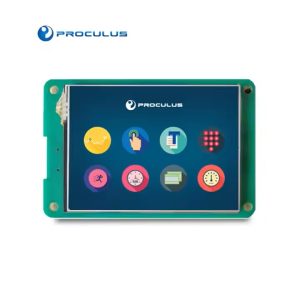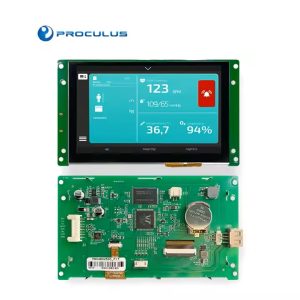What are Nits in Display? Everything you Need to Know
When shopping for a screen or designing one into your product, you’ll eventually run into the question: What are nits in display specs, and why do they matter?
Brightness isn’t just about how “good” a screen looks; it’s also about readability, usability, and performance in the real world.
Whether you’re developing a touchscreen for factory automation or building a handheld device for outdoor use, understanding nits is essential to making the right hardware choices.
In this guide, we’ll break down everything you need to know; from how nits are measured to what values work best for different environments. Keep reading!
How many nits is a good screen?
What qualifies as good brightness largely depends on the environment in which the display will operate. For example, a 350-nit screen might look vibrant in a living room but appear dim and washed out in direct sunlight. Here’s a breakdown by use case:
- 300–500 nits: Adequate for most indoor applications, like control panels, office displays, and consumer electronics used in ambient lighting.
- 500–1000 nits: Ideal for bright indoor environments or semi-outdoor spaces, such as kiosks near windows or factory floors.
- 1000+ nits: Recommended for outdoor displays or high-ambient-light settings, such as marine equipment, vehicle dashboards, and field-ready industrial tools.
Ultimately, the “right” brightness isn’t just about maximum output; it’s also about readability in real-world conditions, power efficiency, and user comfort over time.
What Are Nits in Display?
Nits are a unit of luminance, which measures how much visible light a display emits from a given surface area.
Technically, one nit equals one candela per square meter (cd/m²) — a candela being roughly the brightness of a single candle.
This metric is especially important for screens because it reflects how bright the screen appears to the human eye, not just how much light it produces overall.
Unlike total light output (measured in lumens), nits account for surface area, making them a more accurate way to compare brightness across different-sized screens.
For developers, engineers, and product designers, understanding nits helps answer key usability questions:
- Will this screen be readable outdoors?
- Will the brightness overpower or complement other UI elements?
- Does the display meet the visual demands of the application?
Why do Nits Matter in Screen Brightness?
Whether you’re designing an interface for a medical device, a vehicle dashboard, or an industrial control panel, nits directly affect visibility, usability, and product reliability.
For example, a 300-nit display might look great indoors, but take that same screen outdoors and it’ll wash out completely.
That’s where a 1000-nit screen makes all the difference; cutting through glare and maintaining sharp, vibrant visuals in any lighting condition.
Brightness also impacts how users perceive contrast and color accuracy. In lower lighting, even small differences in nit levels can influence whether content looks crisp or faded.
Ultimately, the right brightness ensures your display works consistently, clearly, and safely, no matter where it’s used.
What is a Good Nit value for Indoor Screens?
For most indoor applications, 300 to 500 nits is the standard sweet spot. This range provides sufficient brightness for offices, retail spaces, kiosks, and general-purpose touch interfaces.
At these levels, content remains clear and readable without drawing excess power or causing unnecessary eye strain.
If your device will be exposed to brighter indoor lighting (think showrooms, hospitals, or factory floors) you may want to opt for something closer to 600 to 700 nits to maintain visibility without having to crank up contrast settings or backlighting.
What’s the Difference Between Nits and Lumens?
This is a common point of confusion, especially when comparing screens to projectors. Nits and lumens both measure brightness, but they apply to different kinds of devices and use different methods.
- Nits (cd/m²) measure how much light a display emits per square meter of its surface. It’s a unit of luminance used for self-emitting displays like LCDs and OLEDs.
- Lumens, on the other hand, measure total light output from a light source—most often used for projectors or lamps.
So, if you’re evaluating monitors, touchscreens, or any integrated display, you’re looking for nits. If you’re choosing a projector or external light source, lumens are the metric you need.
Bottom line: nits = screen brightness, lumens = total light output. Make sure you’re comparing the right numbers for the right devices.
How are Nits Measured?
Nits are calculated as candelas per square meter (cd/m²), and they’re measured using a luminance meter, a specialized tool that detects how much light is being emitted from a specific area of a screen.
These meters are pointed directly at the display, often in a controlled lighting environment, to ensure accurate readings.
The test setup accounts for screen uniformity, ambient light, and angle of measurement. In manufacturing, this ensures every display meets consistent brightness standards across batches.
It’s worth noting that nit values can vary across the surface of a display, especially in lower-quality panels.
That’s why high-end manufacturers (including Proculus) perform uniformity checks and report typical brightness values that you can rely on during system integration.
Can Nits Affect Eye Comfort?
Absolutely! Brightness isn’t just about visibility; it also plays a role in eye strain and long-term comfort. High-nit displays are critical for outdoor readability or environments with intense ambient lighting.
However, overexposure to high brightness in low-light settings can cause fatigue, especially during prolonged use. This is particularly relevant for operators or users interacting with a screen for hours at a time.
The key is to choose a display that offers the right nit range for your application. For indoor industrial control panels or handheld terminals, 300–500 nits strike a comfortable balance.
For outdoor or variable-light environments, pairing high-brightness panels with automatic brightness adjustment or user-controlled dimming is ideal.
How Can I Check the Nits of my Device?

There are a few reliable ways to determine the nit value of a display:
- Check the technical datasheet: Most reputable manufacturers list brightness in cd/m² (nits) under their display specifications. It’s a good indicator of real-world performance.
- Use a luminance meter: For field verification, a calibrated luminance meter can measure actual brightness output in a controlled environment.
- Contact the manufacturer: If you can’t find the info online, reach out. Display vendors who stand by their products (like Proculus) will provide verified brightness specs and performance ranges.
- Use mobile apps (with caution): Some mobile tools claim to measure screen brightness using your phone’s light sensor,but these are rarely accurate for technical use.
Nits and Display Performance: The Proculus Tech Advantage
Brightness is just one part of the equation. In the end, what matters is how it performs in the field. At Proculus Technologies, we engineer UART TFT LCD modules designed to deliver sharp visibility, seamless integration, and long-term durability.
Our displays range from 300 to over 1000 nits, with both capacitive and resistive touch options, optimized for indoor control systems or full-sunlight industrial applications. But what really sets us apart is ease of deployment:
- Our modules work out of the box with just a few UART commands;
- The UnicView GUI editor lets you design and deploy rich user interfaces—no OS or graphics coding needed;
- And we offer reliable documentation, fast support, and custom solutions for teams who build with precision.
Whether you’re creating a prototype or launching a production run, Proculus makes it simple to scale.
Ready to bring your interface to life with stunning clarity? Explore our high-brightness UART TFT LCD modules!
What Are Nits in Display: FAQ
If you’re still wondering how nits impact your next project, here are quick answers to the most common questions:
How many nits is a good display?
Anywhere from 300 to 1000+ nits, depending on use case. Indoor screens need less brightness than outdoor or industrial ones.
Is 1000 or 2000 nits better?
Higher is brighter, but not always better. 1000 nits is excellent for most outdoor uses. 2000 nits is often overkill unless you’re working in extreme sunlight or glare.
Is 400 nits brightness good?
Yes. For indoor use or standard touchscreen applications. It’s a sweet spot for balancing visibility and energy efficiency.
What does 1200 nits mean?
It means the screen emits 1200 candelas per square meter; very bright, and excellent for outdoor or industrial applications where visibility is critical.
Conclusion
So, what is nits in display terms really about? It’s about ensuring your screen works when it counts, delivering clear visuals in bright sun, reducing eye fatigue indoors, and supporting smooth interaction across use cases.
We’ve looked at how nits impact visibility, comfort, and decision-making, plus how to evaluate and measure brightness accurately.
And when it comes to choosing a display that delivers on every front, Proculus Technologies offers UART TFT modules that are as practical as they are powerful, ready to integrate, easy to configure, and engineered to shine.

 English
English


